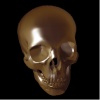The draw call problem with CIV 5 and terrain normal calculating are two quite different thing, the first is caused by artists not having optimized engine for the purpose and second by programmers optimizing certain aspects of the game engine.
I agree that a certain amount of criticism is always good when learning new things. The normal calculating method was described in the engine documentations which was about_new tech and new ways of doing things, not in the hobby sections of some discussion area. My point here, those people publishing things on the net have quite solid understanding of what they are writing.
Indeed, in the later versions of the game, they changed the terrain rendering code and what is stored in textures etc. But once again, it was a question needs. The BFBC2 terrain rendering could go only so far. They improved / changed the code because mixing so many terrain layers became prohibitive in the sense of performance. I used exactly the same code earlier in my hobby projects and I was pleased in it's performance. However, later my needs became different and I adopter another method where I couldn't use the code anymore. Anyhow, a GPU, when correctly used has pretty much computing power and few used ALUs won't affect the performance pretty much at all.
Cheers!









